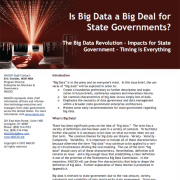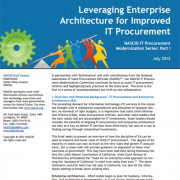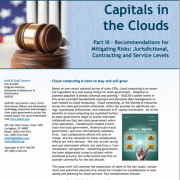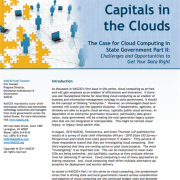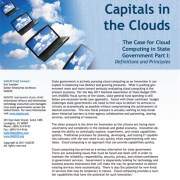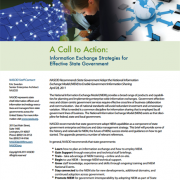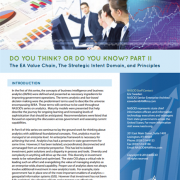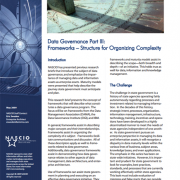Is Big Data a Big Deal for State Governments? The Big Data Revolution – Impacts for State Government – Timing is Everything
The volume and velocity of data creation is at all time high – and is accelerating. State government is a veritable data engine creating vast amounts of data from a vast number of sources. That data is being used to comply with regulations; uncover fraud, waste and abuse; and ultimately improve the lives of citizens. The sky is the limit in terms future data generation based on the growth in mobile applications, sensors, cloud services and the growing public private partnerships that must be monitored for performance and service levels, according to NASCIO’s latest in its series of issue briefs on analytics – “Is Big Data a Big Deal?”
In this issue brief, the universe of “big data” will be explored in order to:
- Create a foundation preliminary to further description and exploration in future briefs, conference sessions and innovations forums.
- Set common characteristics of big data versus simply lots of data.
- Emphasize the necessity of data governance and data management within a broader state government enterprise architecture.
- Present some early recommendations for state government regarding big data.

